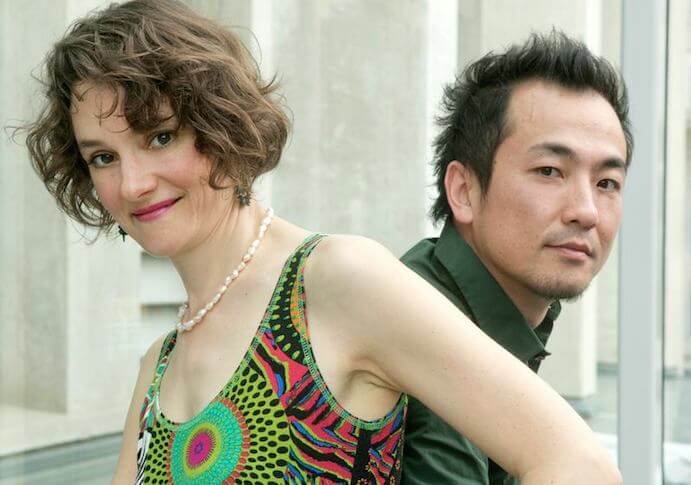Four hands piano music is the rhinoceros of classical chamber music. Once widespread, it has almost disappeared since the beginning of the 20th century. It also possesses the heft of a rhino: eight octaves of a massive instrument thundering under twin sets of hands, with extra resonance from the use of twice as many notes. So the release of a recording of four hands piano works by Terry Riley, performed by the duet ZOFO, is a surprise. Riley’s seminal 1964 piece In C insured his place in the annals of music history as a pioneer in introducing riff-like repetition into classical music, as well as helping to rekindle interest in tonality. You wouldn’t expect this progressive composer to write music for a medium that is long past its 19th century heyday.
For before the advent of recording technology, most middle class people experienced the newest orchestral music in their homes as reductions for four hands piano. Almost every major symphony or opera would quickly be arranged for two pianists for easy perusal and access; Liszt turned out transcriptions of Bellini, Berlioz, and Beethoven, among others. But once records became easily available, most composers stopped writing for four hands piano. Yet now groups like ZOFO (whose name stands for 20-finger orchestra) are attempting to revive the piano duet by commissioning and arranging works from the 20th and 21st centuries.
ZOFO Plays Terry Riley, released earlier this year on Sono Luminus, consists of six pieces originally for four hands, as well as three arrangements. The five most fully-realized works come from The Heaven Ladder, Book 5. It is in these pieces that the resources of a piano duet are best explored. Attractive ostinatos in the steamy low bass range of the piano dance away beneath tinkling, spinning melodies high up, while syncopated chords fill in the middle. Monolithic chords show off the glory of a resounding piano with all overtones activated. The middle section of “Cinco de Mayo” is based on an intriguing exploitation of the piano, wherein deep bass notes are struck quickly while higher keys are held down, so that the bass disappears but another note is activated by the vibrations, creating a hazy, dry desert landscape.

ZOFO
All five Heaven Ladder pieces (“Etude from the Old Country,” “Jaztine,” “Tango Doble Ladiado,” “Waltz for Charismas,” “Cinco de Mayo”) explore similar territory. Buoyant accompaniments underpin unpredictable, grinning melodies that sound half-improvised. Indeed, Riley has spent much of his career improvising, even participating in all night concerts at the Philadelphia College of Art in the late 1960s. But the excitement of genuine improvisation is missing, and the pieces begin to feel homogenous in texture and mood. All of them have a goofy, grinning air to them that, while pleasant to listen to, also fails to keep one’s attention. “Praying Mantis Rag,” a short piece written for ZOFO, especially suffers from this quality.
Variation is introduced to the record with the crazed “Half-Wolf Dances in Mad in Moonlight” and gradually building “G Song,” both written for the Kronos Quartet and arranged by Keisuke Nakagoshi, who is one half of ZOFO. Yet the shades of color possible on strings are missed here on the less polychromatic piano. The best piece is “Simone’s Lullaby,” originally for solo piano and arranged for duet by Eva-Maria Zimmermann, the other member of ZOFO. Similar enough to Handel’s “Sarabande in d minor” to be a reworking of it, it loops the plangent theme of that piece through eerie variations populated by ghostly chimes and muted dissonances. Finally, the bright grin is gone, affective emotions are expressed, and a new texture explored. If the piano duet is to be revived, this is the direction it should continue in.























